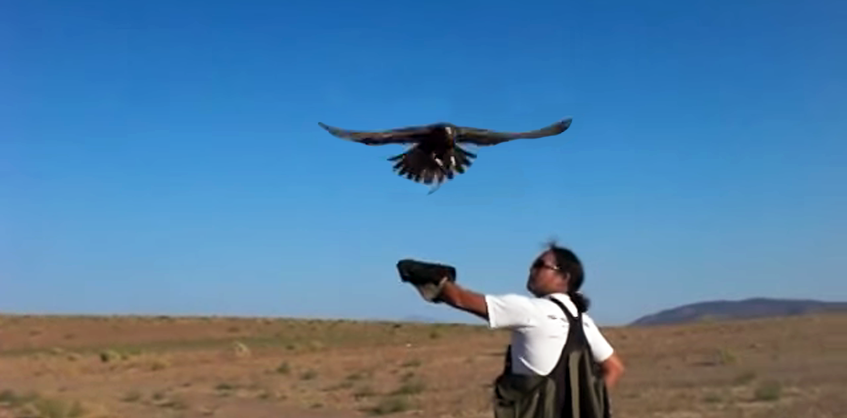How do you train a bird to fly up to and dive attack a lure at 1,000 feet? Helium balloons! Here is how helium balloons are used to train falcons.
The pride of a falconer—one who trains falcons, of course—is how high your bird can fly. Two or three hundred feet is impressive, but the ultimate goal in falconry is the 1,000-foot mark.
Believe it or not, there are actually specialized helium balloons designed for the specific purpose of helping trainers achieve this.
Falconry helium balloons
Falconry helium balloons range in sizes from 4 to 8 feet in diameter or larger, depending how much weight is being lifted and what kind of weather conditions are present.
These helium balloons are typically made from a tougher polyurethane skin instead of the latex or mylar that you’re used to with party balloons. This makes them stronger and allows them to soar up to a couple thousand feet and be reeled in and reused without bursting.
How helium balloons are used in falconry
The basic premise is to lift and dangle a lure, whether it be a chunk of meat or a dead pigeon, from underneath the helium balloon. Like house training a dog, this serves as the bird’s reward for hitting the altitude that the balloon is flying.
The trainer typically starts flying the helium balloon at a lower altitude to get the falcon accustomed to targeting it. Over time, the lure is lifted higher and higher until the goal height is hit.
Recovering the helium balloon
The helium balloon is tethered to the ground to both control its altitude and to allow it to be retrieved, which is done a couple of different ways:
The more elaborate system, as seen in the video at the top of this article, is to use a release clip and a parachute that holds the lure below the helium balloon. When the falcon takes the lure, the clip releases it and the parachute deploys and brings them down. An outrigger on the ground is then used to reel in the helium balloon.
The simpler method is to actually just let the falcon bring the helium balloon to the ground by tying the lure directly to it. You can watch that happen in this clip (just jump to the 4:35 mark):
The helium balloon’s future in falconry
The one unavoidable threat to using helium balloons for falconry is wind, which is when some falconers switch to using kites to dangle lures instead of balloons. However, the both kites and falconry helium balloons may soon be on the outs.
With the rise of inexpensive drone technology, many falconers are now finding that drones are not only often cheaper than helium balloons in the long run, they can be precisely and quickly controlled, can be used in most weather conditions, and require very little maintenance to deploy and store.


